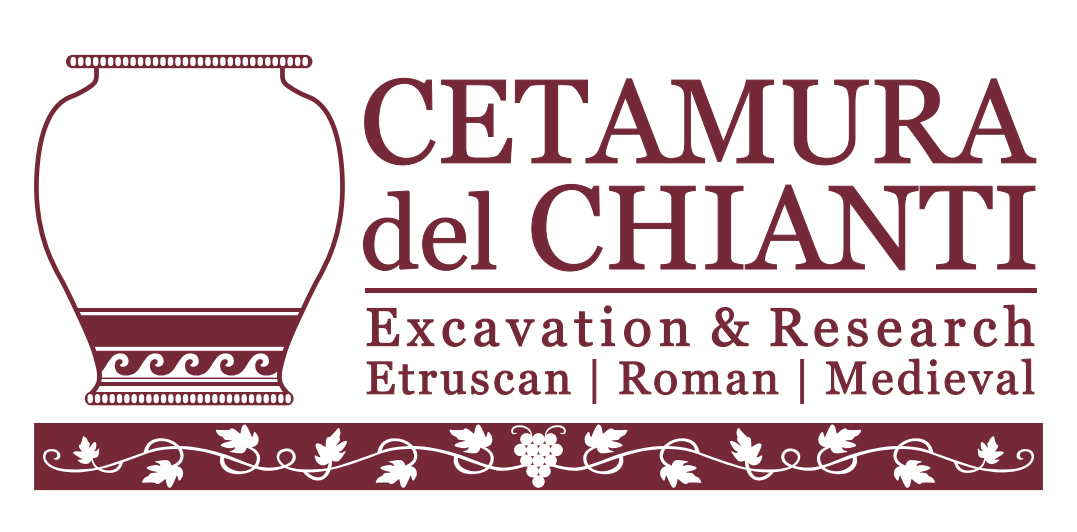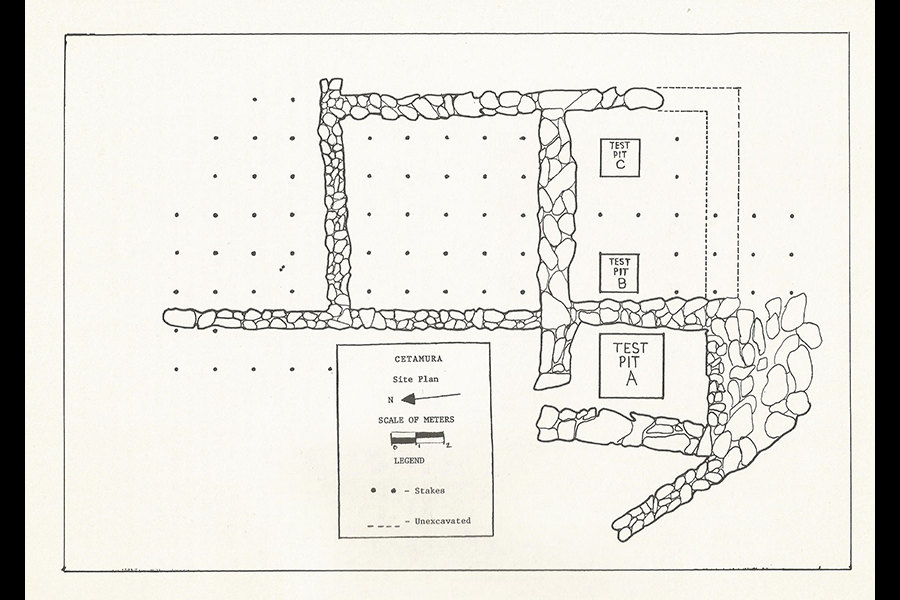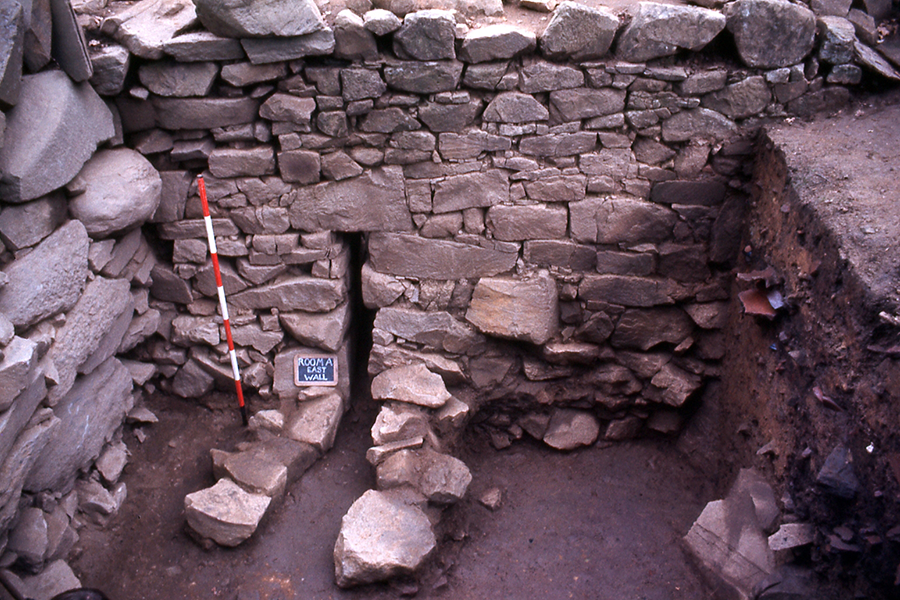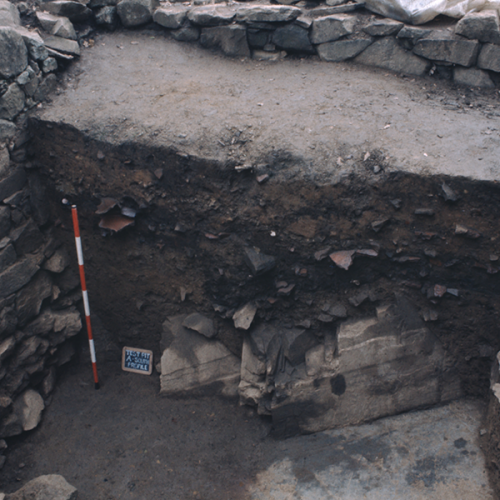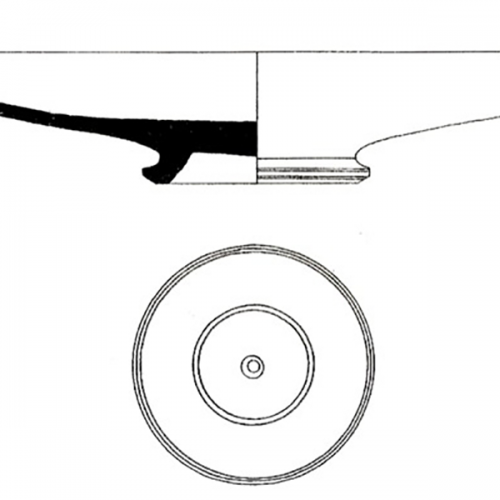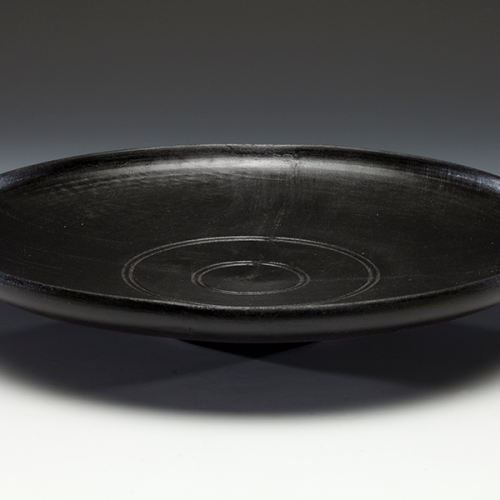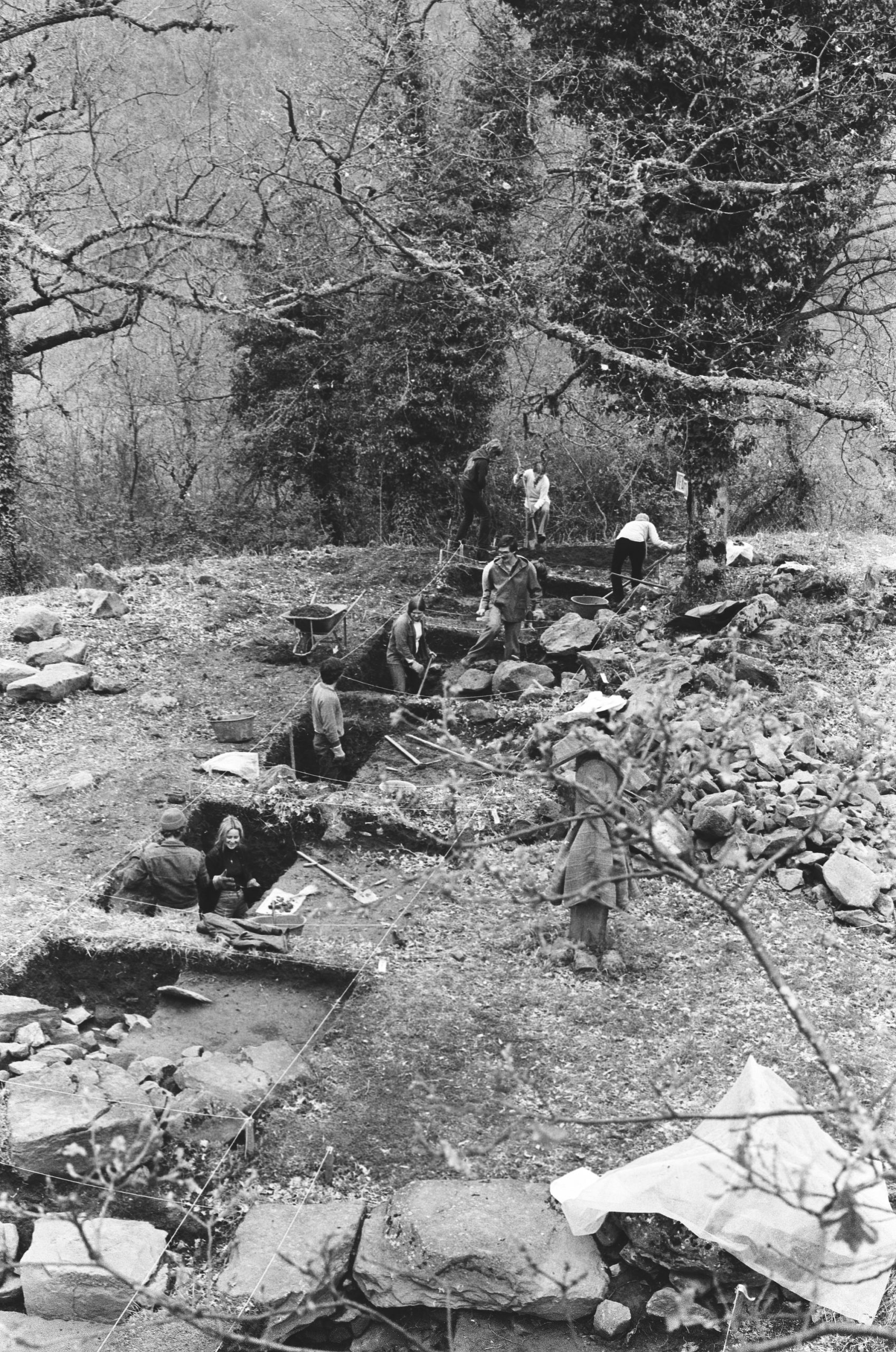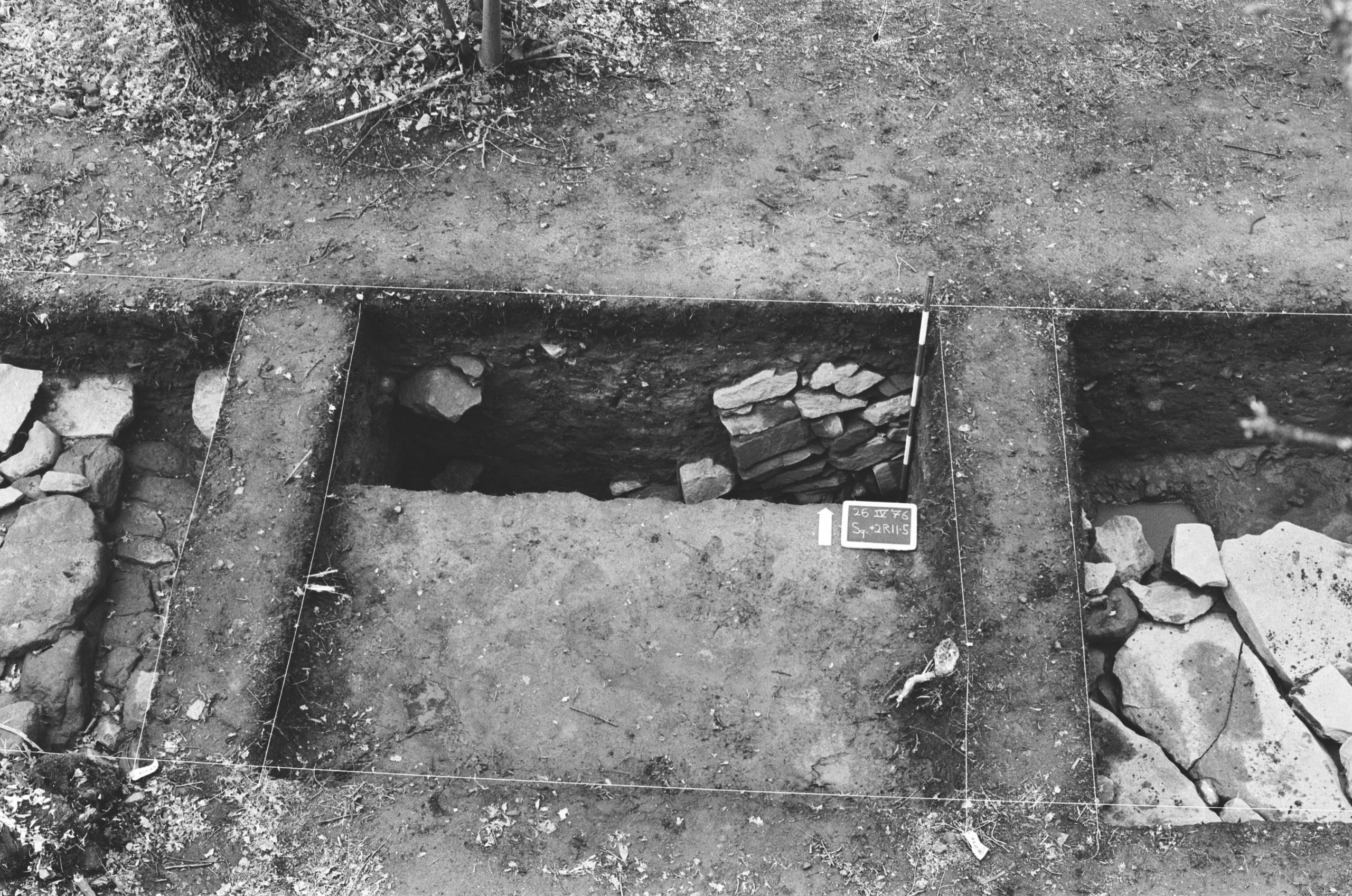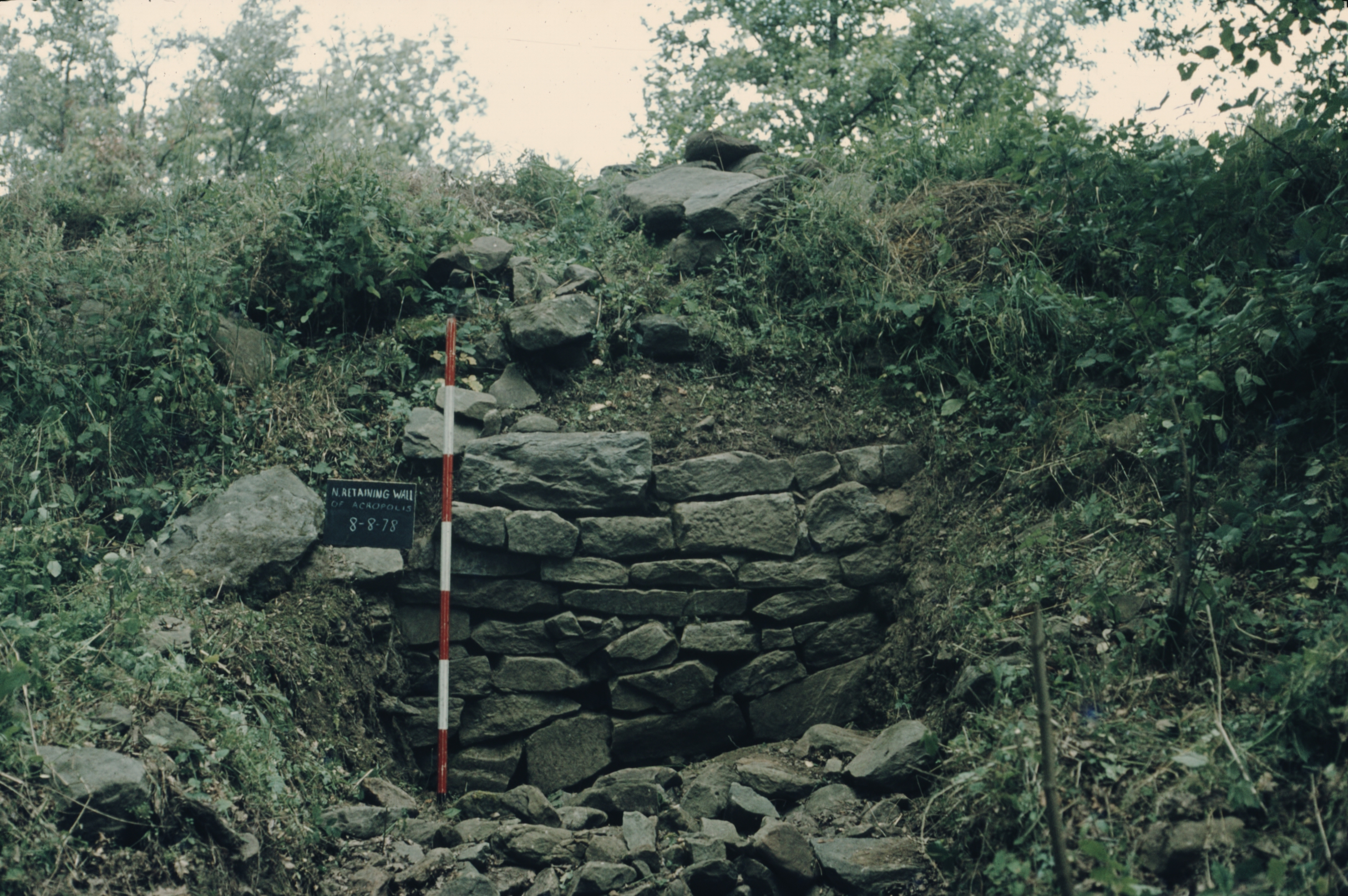1973-74
The First Excavations
The permit to excavate the site of Cetamura del Chianti was granted to Americans of the Florida State University Study Center in Florence by the Soprintendenza alle Antichità d’Etruria (Superintendent, Guglielmo Maetzke) in 1973 and excavations began in the fall on September 11, under field director Clark Sykes, with overall supervision by Professor John Reich of the FSU Classics Department.
In the first two years there were three campaigns (fall, 1973; spring and fall, 1974). The first test pits (A,B and C) were sunk within the walls of the Etruscan buildings that came to be called Structure A and B [a.]. Immediately the team began to find Etruscan pottery and coins of the 3rd-2nd century BCE. Early notes refer to the excavation of soils dark with carbon, often containing bones. It was hypothesized that these finds belonged to incidents of dumping in the two structures. Later excavations would identify both Structure A [b., c.] and B as basements for large structures that probably served to accumulate and manage water, best labeled as cisterns. The soil filling them may have washed into the basements after the buildings went out of use, but it seems likely that some dumping occurred as well.
In 1974, the area of excavation was expanded to include walls of Structure C, to the north of A and B. The amount of pottery excavated in these seasons was enormous. A project to study the Etruscan black-gloss pottery was begun by student Myra Houston, and resulted in dating the bulk of the specimens to the 2nd century BCE. This black-gloss assemblage contained numerous plates, bowls and other items of high-quality dining ware [d., e.].
1976
Excavations Expand
In the spring of 1976 the excavations were conducted by Dr. John Oleson, with Cheryl Sowder as assistant director. The ambitious agenda included 14 trenches, each 1.5 x 1.5 m, running from west to east on Zone II [a., b.] and a trial trench against the fortification wall on the north side of Zone I [c.]. No new structures were identified, but a number of segments of walls, drains and pits were revealed on Zone II. One corner of a structure would later turn out to be part of a kiln, Structure K, in the Etruscan artisans’ quarter of Cetamura. The fortification wall most likely was part of the medieval castrum.
An abundance of finds pertained to the Roman period at the site, including molded and blown glass, red-gloss Arretine pottery, coins and a bronze pendant of a type worn by Roman soldiers. Understanding of the site expanded to include Early Roman imperial habitation after the Etruscan period.
